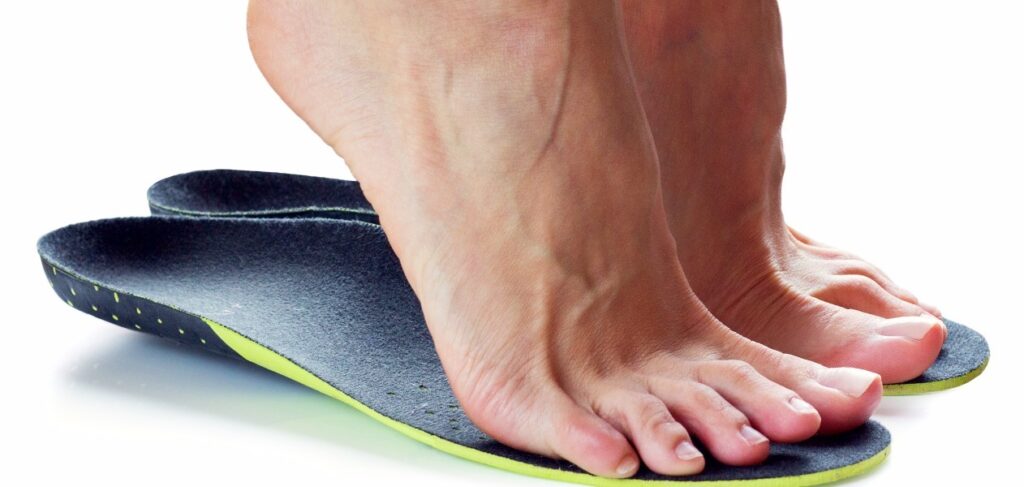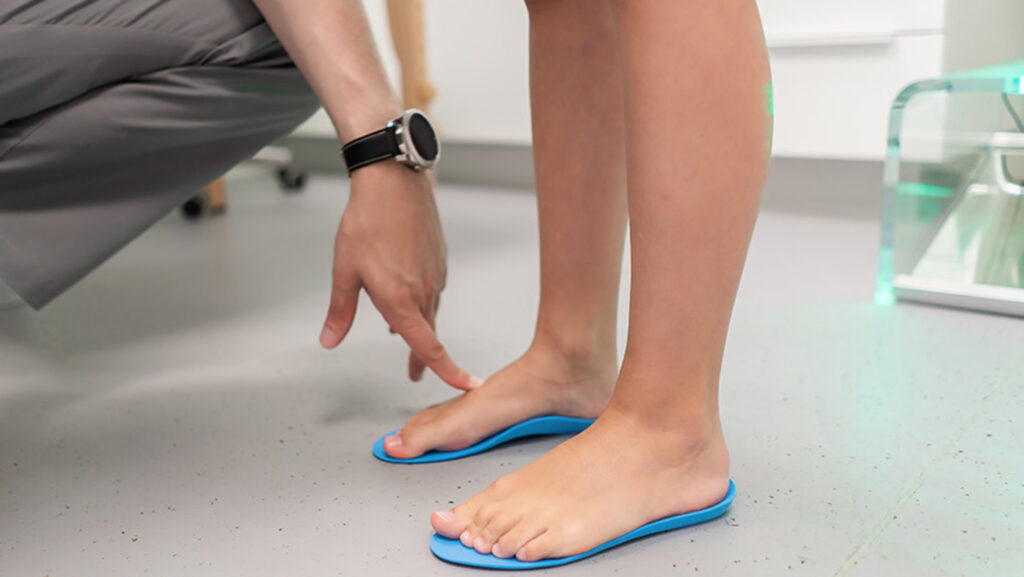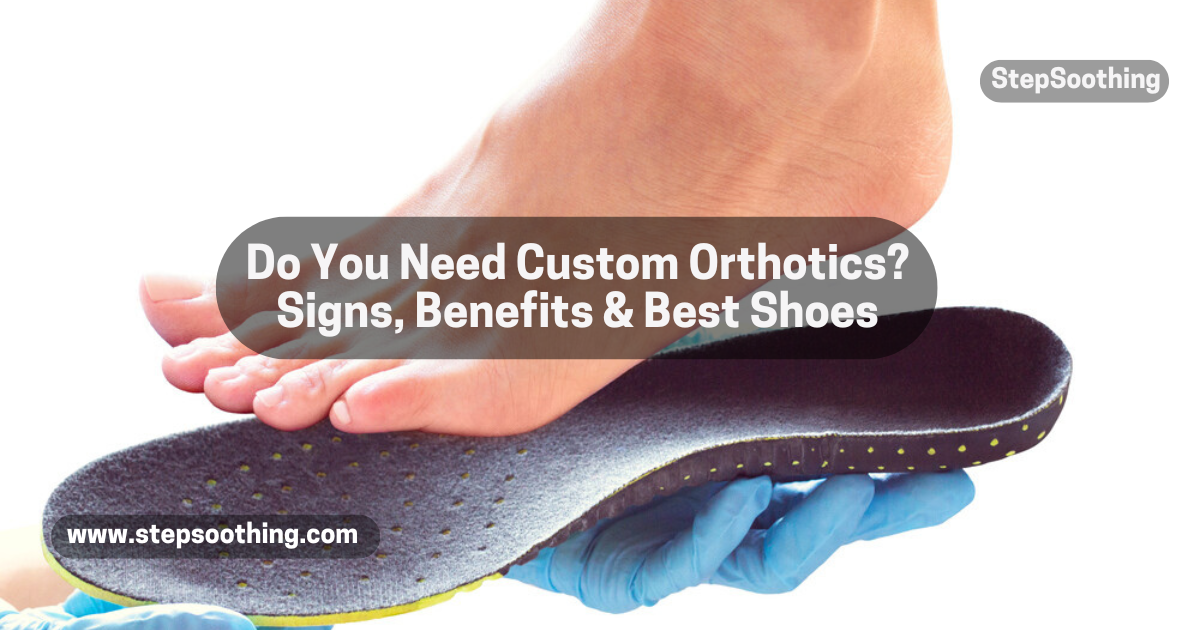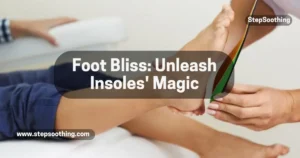The Complete Guide to Custom Orthotics & Best Shoes for Foot Support

Do You Need Custom Orthotics?
Foot pain and posture problems are common issues that can significantly impact daily life. Many people ignore these problems, assuming they will resolve on their own, but untreated foot conditions can lead to chronic pain, mobility issues, and even joint misalignment. If you experience persistent discomfort in your feet, ankles, knees, hips, or lower back, custom orthotics might be the solution you need.
Custom orthotics benefit a wide range of individuals, including athletes seeking injury prevention, professionals who spend long hours standing, and seniors needing extra support for aging feet. This guide will explore what orthotics are, how they work, and how to choose the best shoes to pair with them.
Understanding Orthotics: What They Are & How They Work
What Are Orthotics?
Orthotics are specially designed foot support devices that help align the foot, improve posture, and relieve pain. They work by redistributing pressure, correcting imbalances, and supporting the arches of the foot. Whether you have a medical condition like diabetes, plantar fasciitis, or bunions, or simply need better foot support, orthotics can help.
Types of Orthotics
There are two main categories of orthotics:
- Over-the-Counter (OTC) Insoles: Available at drugstores, these offer basic cushioning and support but lack customization.
- Custom Orthotics: Designed specifically for an individual’s foot structure, these provide targeted relief and functioning support.
Custom orthotics come in different types:
- Rigid Orthotics: Made from plastic or carbon, they help control foot movement and correct biomechanics.
- Soft Orthotics: Made from foam or gel, they provide cushioning and are often used for conditions like diabetes or neuropathy.
- Hybrid Orthotics: A mix of rigid and soft materials, offering both stability and comfort.
How Custom Orthotics Are Made
The process of creating custom orthotics involves several steps:
- Foot Exam & Assessment: A podiatrist or healthcare provider evaluates your foot structure, movement, and posture.
- Gait Analysis: Your walking pattern is examined to detect imbalances or inaccuracies.
- Imaging & Scanning: Using 3D scanning, X-rays, or plaster molds, specialists create a precise design tailored to your needs.
- Material Selection & Construction: The orthotics are crafted using durable materials like plastic, foam, or carbon for longevity and effectiveness.
Related Aritlce: Custom Insoles for Sports Performance
3. Signs You May Need Custom Orthotics
Common Foot Pain Conditions
Persistent foot pain can indicate the need for orthotics. Common issues include:
- Heel Pain (Plantar Fasciitis): A sharp ache in the heel caused by inflammation.
- Arch Pain (Flat Feet, High Arches): Imbalances in foot structure lead to pain and difficulty walking.
- Ball of Foot Pain (Metatarsalgia, Bunions, Neuromas): Discomfort in the forefoot due to excessive pressure or deformities.
Posture & Gait Issues Linked to Foot Problems
Foot problems can affect your posture and overall body alignment, leading to:
- Knee, Hip, or Lower Back Pain: Poor foot support can stress the joints, leading to imbalance and injury.
- Overpronation/Supination: Uneven shoe wear patterns indicate improper foot alignment, leading to stress on the legs and ankles.
- Fatigue or Discomfort from Prolonged Walking or Standing: If you hobble or experience soreness after long hours of standing, orthotics can provide relief.

4. Benefits of Wearing Custom Orthotics
Pain Relief for Feet, Knees, Hips, and Lower Back
Custom orthotics help relieve pain by aligning the foot and reducing stress on joints. They are particularly useful for conditions like bursitis, tendonitis, and runner’s knee.
Better Foot Alignment & Posture Correction
By correcting imbalances and deformities, orthotics improve biomechanics, enhancing mobility and preventing further injury.
Shock Absorption & Reduced Joint Stress
Custom orthotics absorb impact, reducing strain on ankles, knees, and hips. This is especially important for athletes or those engaged in high-impact activities.
Enhanced Comfort for Daily Activities
Whether walking, running, or standing, orthotics enhance comfort by providing cushioning and support.
Improved Athletic Performance & Injury Prevention
Proper foot alignment and stabilization prevent overuse injuries, making orthotics valuable for sports enthusiasts.
Related Article: Benefits of Using Insoles
5. How to Get & Adjust to Custom Orthotics
Getting the Right Custom Orthotics
To find the right orthotics, visit a podiatrist, orthopedic doctor, or physical therapist. They will diagnose your condition using gait analysis, scanning, and biomechanical assessment.
Adjusting to Custom Orthotics
The break-in period can take a month. You may experience mild discomfort, but this typically improves as your body adjusts. Proper care is also essential—keep them clean, store them at proper temperatures, and replace them every 1-2 years.
6. Choosing the Right Shoes for Custom Orthotics
Features to Look for in Orthotic-Friendly Shoes
- Removable Insoles: Allows custom orthotics to fit properly.
- Firm Arch Support & Cushioning: Enhances stability and shock absorption.
- Durable & Comfortable Material: Ensures longevity and prevents foot strain.
Best Shoes for Different Needs
- Walking Shoes: Brooks Addiction Walker, New Balance 928v3
- Running Shoes: Brooks Ghost 15, Asics Gel-Kayano 30
- Work Shoes: Dansko XP 2.0, ECCO Helsinki 2
- Training Shoes: Nike Metcon 9, Reebok Nano X3
- Hiking Shoes: Merrell Moab 3, Salomon X Ultra 4 GTX
- Sandals: Birkenstock Arizona, Vionic Tide Sandals
Related Article: Orthotics vs Insoles
7. People Also Asked
How do I know if my orthotics are working?
If your foot pain decreases, posture improves, and walking feels more natural, your orthotics are working effectively. You should also notice less fatigue in your feet, knees, and lower back after prolonged standing or walking. If discomfort persists after a few weeks, consult your specialist for adjustments.
Are custom orthotics covered by insurance?
Coverage for custom orthotics varies by healthcare provider and insurance plan. Some policies cover them partially or fully if prescribed by a podiatrist or orthopedic specialist. Check with your insurance provider to understand eligibility, reimbursement options, and required documentation.
Can orthotics help with bunions or arthritis?
Yes, custom orthotics can alleviate pressure on bunions and support joints affected by arthritis. They help distribute weight evenly, reducing pain and preventing further misalignment. While they won’t reverse bunions or arthritis, they can slow progression and improve comfort.
How much do custom orthotics cost?
The price of custom orthotics typically ranges from $200 to $800, depending on the materials, design complexity, and medical provider. High-performance orthotics for sports or severe conditions may cost more. Some insurance plans may help offset the cost.
Do I need special shoes for orthotics?
While you don’t necessarily need special shoes, orthotic-friendly footwear is recommended for the best results. Look for shoes with removable insoles, deep heel cups, and firm arch support to ensure your custom orthotics fit properly and function as intended.



